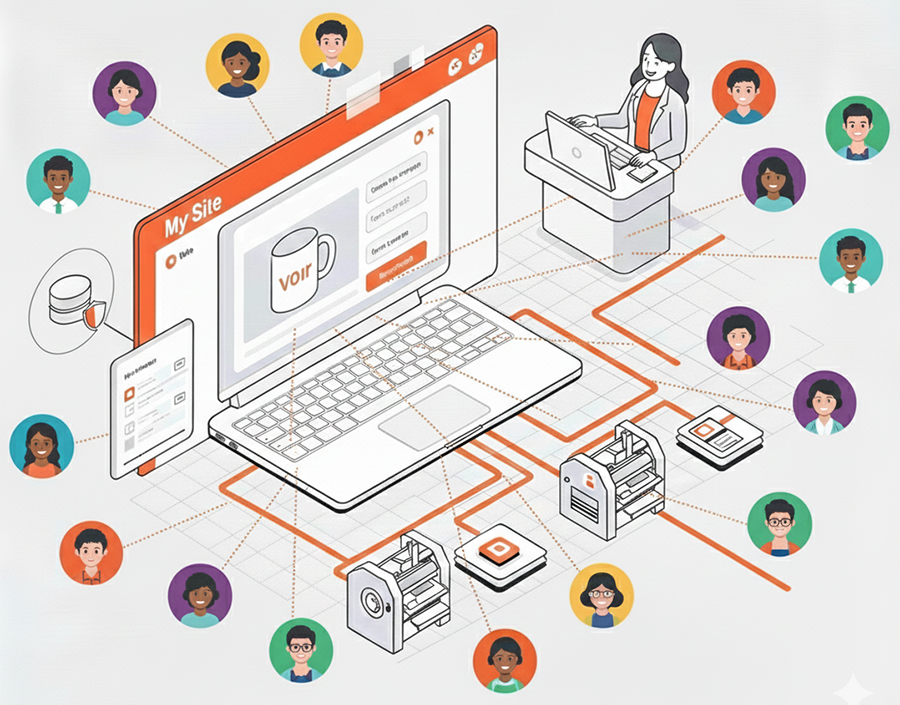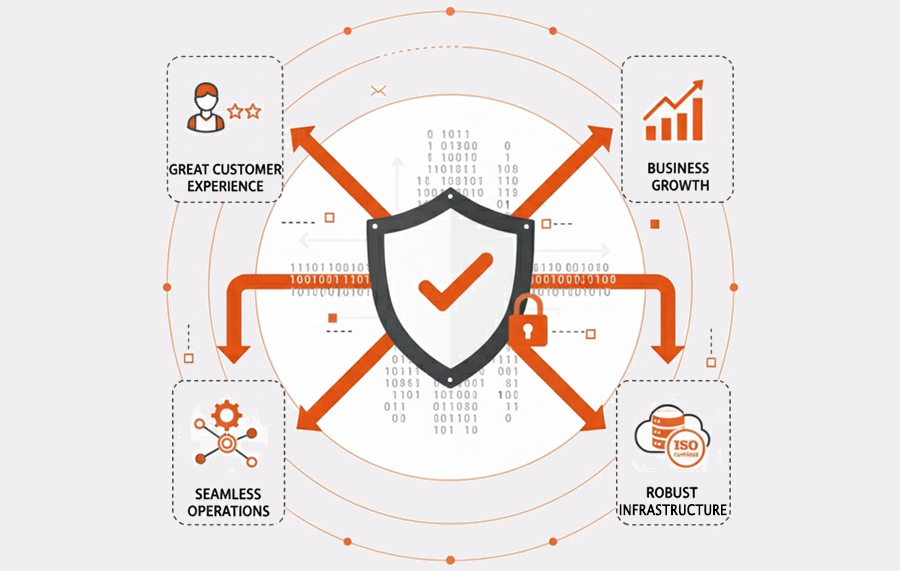1 July 2019
Yes, You Need a DAM Strategy... Here's What You Need to Launch it

Here's What You Need to Launch it
15 minute Read
Digital Asset Management (DAM) is not just software. It's a way of life. It's a long-term commitment that is not as daunting as you may first think. Once you have a DAM strategy and the means in place to implement it, you should start to see the return on your investment.
The benefits of adopting DAM into your marketing processes cannot be overstated. It will provide your teams with a way of working that will increase their productivity and reduce their risk of damaging your brand's integrity. With the correct procedures and strategy in place, using a DAM solution will change yours and your team's working life.
There are many theories are out there about measuring the value of brand recognition and loyalty. However, no one has ever argued that brand consistency is detrimental to a business's reputation and profitability.
A part of keeping that brand continuity is using the COPE model – Create Once Publish Everywhere. Taking this on board for your promotional activity will save your teams a lot of time (and therefore your budget). It means that you have something that is ready to go across channels, something you don't have to start again.
Knowing the benefits not only to your team, but across the business, once you have purchased a solution, the pressure is on to make it work. You need to have a solid plan in place.
Having provided DAM functionality to our customers over the last 21 years including some of the world's biggest brands – we believe we know a thing or two about what the key components of introducing and managing a DAM are and how best to plan your strategy for using it long-term.
If you are reading this blog, you probably want to make sure your DAM solution is working hard for you, or you have decided to purchase one. If you have made that decision – congratulations and welcome to the first day of the rest of your life!
The following points for introducing a DAM strategy is useful for the marketing, operations or procurement professional who is a stakeholder in this process.
Introducing Governance
Your DAM strategy begins with a leader with a vision. What are you looking to achieve? What are your measures of success for this project?
The most important thing to communicate is that the DAM is not a dumping ground. It should not be left to just one person to mop up after everyone else either. What if that person were to leave or go on holiday taking all their knowledge and experience of process, taxonomy and future roadmap with them? How is the DAM going to survive without them? – it cannot live with one person, as it will die there too.
An Eight Point Plan to Get You Started
- Why are you introducing a DAM solution?
- How will it work?
- Who is going to manage the solution on a strategic level as well as a day to day basis – who is ultimately responsible for the success of this project?
- Who is going to audit, direct and guide how the solution is used?
- How is that direction translate into regular communication with service users?
- What are the metrics you will use to report its success?
- Who are the service users and what are their expectations?
- What accountability is there in place for circumventing use of the DAM?
Your governance plan is a living and breathing being, it is going to change with regulation, with technological advances and changes to and within your organisation. It needs someone to anticipate and move with those changes to your internal and external environment.
Once you have the answers, it's time to get into the fun nitty gritty details. Assets are also not just images – this could mean documents, files, videos – anything you may store on your computer.
For some, this may be within their existing Web-to-Print solution.
Who is Touching Your Things?
If you have anyone 'touching' your digital assets, you need to know what is happening to them.
- Who has access to them?
- Who is using them?
- Who should be using them?
- Who oversees keeping asset banks up to date?
You're in a very visible position when you have teams of people relying on the content being up to date and easy to source. In a content driven world it's not enough to make the collateral to shove into a folder and forget about.
Brand management can be a tricky job – and in larger companies it's a full-time job. If you don't have a team of people, whose responsibility it is to manage and maintain these assets then you may have a brand guardianship problem. With no accountability comes chaos, and the possibility of using out of date campaign content or embargoed images or even worse – old branding!
When you have a DAM and an effective strategy in place, you will know the answers to all the above, because it is there for you to see.
Workflows Working for You
Getting a handle of the right DAM workflows is something you need to be thinking about when engaging a supplier. It's too late once the sale is made. No one knows your business, your teams like you and you know how these things need to run. However, the right supplier can use the benefit of their experience to inform and advise so you can make the most of their experience.
With the right workflow in place, you can streamline and automate processes and increase communication between team members. Unfortunately, with the wrong workflow in place, you can end up with something convoluted, something that is easy to make mistakes hurt your team as they descend into a blame game as things go wrong.
The following workflows that you need to consider are as follows:
Set up, Taxonomy & Administration
We talked about governance because it one of the first things that you need to think of. Now you have your team selected, knowing who is going to do what takes time and consideration. How the implementation starts will inform how you work with your DAM for a very long time – no pressure there!
One of the major problems that organisations experience before implementing a DAM is the duplication of effort – taking time to find assets for content – or recreating content for campaigns that is already there. The waste of time, resource and money for an organisation spent on inefficient processes for searching and creating assets cannot be underestimated.
The responsible person for your new DAM solution may not be the person who uses the DAM in day-to-day operations, so it is important that they understand how these users will source and amend their images. This is where a clear taxonomy structure is the to the success of this project. Assets need to be laid out in a clear and logical fashion. There is no point in having an image bank for example set out for print campaigns with imagery that is more appropriate for a digital campaign. Searching through a clear folder structure is the way that most users would search – specially to find inspiration. This highlights why taxonomy is so important – it is the very beginning of the user's experience of the DAM. The easier it is to use for them, the more they will use it.
Your DAM administrator will need to think about who needs what and how they are going to access these items. Another good way to source imagery is to use meta tags: you can use the search terms for the type of campaign you want by channel, but also by the sort of content you want to see. It can take a little time to get the assets all searchable in a uniform way, but once you find out how much quicker it is to search for and create campaigns with much less effort than before, the little bit of extra time for the brand guardians to set up that little bit of administration will save time across teams company-wide.
Approval and Permissions
Finding and creating assets isn't where the story begins and ends – there's still the sign off process to consider. Depending on the organisation, it could be any range of people in any order who is involved in signing off material.
For organisations that are heavily regulated – for example the FCA or the company's legal team, it's more than checking the creative and messaging.
Being able to create a simple workflow where all stakeholders in the creative and sign off process can be as simple as inputting an email address when it is time for your collateral to make it to the sign off process. It shows why our DAM functionality isn't just reserved for marketing. If integrated with the company procurement software, briefs can be submitted, artwork created, approval given to then make its merry way to the customer.
Using a solution such as this demonstrates that not everyone can be the same. Not everybody should have or need the same permissions. Some users may be allowed to access certain assets – like internal company documents and others will need access to the full marketing suite and authority to sign off on the cost before purchase. Identifying these needs at the time of set up will make it much easier to communicate company wide what expectations are for using this solution and help to make the implementation smoother as you're sure at the time of introducing the DAM solution to all stakeholders.
The Lifecycle of Assets
You can perhaps see now why this can be a full-time job for more than one person for a large international organisation. The DAM is a single point of truth to thousands of people. To effectively put across a global brand and attractive messaging for each market, marketing content needs to be created faster than most teams can make it. This is why COPE (Create Once Publish Everywhere) can be an essential part of many organisation's DAM Strategy.
Sometimes, it is appropriate to reuse assets over a longer period. This could be in the case of different countries or market segments. It is very helpful if it is possible to be able to do that, but all good things must come to an end. This could be due to new campaigns, a rebranding or licences for images expiring.
If your brand guardian set up and implemented the solution in a clear and usable way, then this is a procedure that should not be too painful. Remember the section about taxonomy and metadata above?
Ring Fencing Your Assets – More About Security
As decentralised teams access assets and collate materials, it makes sense to have your DAM in one place. Your teams have reduced the risk of using out of date material or straying away from brand guidelines.
But what about the security of the central DAM solution?
You need to ask your suppler how are your assets kept safe? It might sound counter intuitive from everything we all know not to keep everything in one place.
Your provider will be able to explain to you the levels of security that they have to keep your business and your data safe. Coreprint is 100% cloud based which is the most secure way of operating software in this instance. This could involve explaining the security protocols in place for hosting, GDPR implications, disaster and recovery procedures, etc.
A good supplier will be able to answer any questions that you may have. They will also bring your attention to anything that you may have missed.
There are key questions you need to ask at the time of interacting with your sales contact. As the key person responsible for the DAM, you will need to have this information and possible contingency plans in place. It needs to be relevant to their organisation about data security and recovery procedures. While your IT department will be a key stakeholder in the overall implementation and management of your DAM solution.
Conclusion
We can't tell you what your full DAM strategy should be – only you know your business and how it works. Understanding your internal and external customers as well as key stakeholders in the process will help you to create something that is used as you envisioned.
If you are looking for a solution that helps you to integrate your marketing collateral in with your ERP/CRM solution – contact us to find out more.
Enjoyed this post? Make sure that you keep up to date with our latest features and news and sign up to our newsletter.
More Resources from Vpress:
- Your Web-to-Print Guide
- Choosing a Web-to-Print supplier
- Why Should Printers Give a DAM about Digital Asset Management?
Yes, You Need a DAM Strategy... Here's What You Need to Launch it
Table of contents
Share this article


